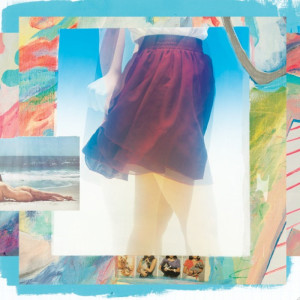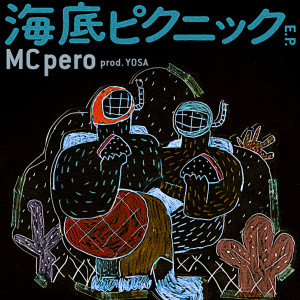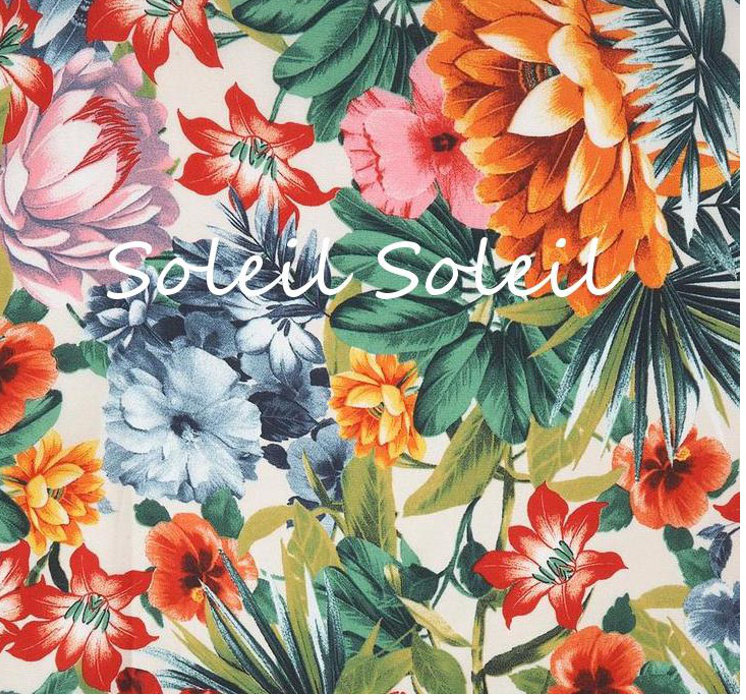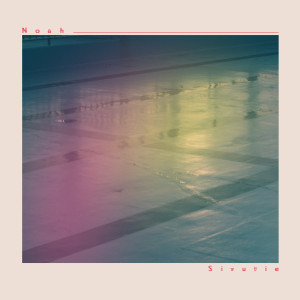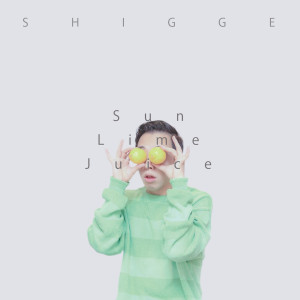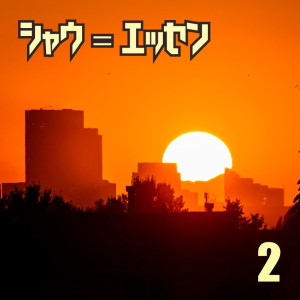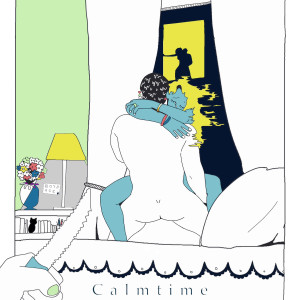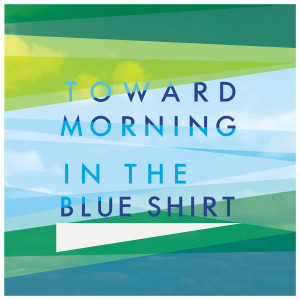“Imasara” marks the first time in Native Rapper’s young career…that I know of at least…where he has had to accommodate another voice beside his own, electronically manipulated one. Lulu joins the Kyoto producer on this twisty-tury love song, and it is a good test to see if his music can work alongside a voice not being played around with. And Lulu is as good a vocalist you can get, given her huskier delivery. “Imasara” works, as it is a little less frantic than some of the songs Native Rapper handles on his own, leaving more space for him and Lulu to duet over, the two trading lines. Yet he isn’t abandoning what he has done, as “Imasara” still features nickel turns and ear-grabbing details (the little squeaky sound…but not a bed squeak…that creeps in at points, or the horns), not to mention his familiar digi delivery, which makes for a nice contrast with Lulu’s untouched style. A nice whirlwind for Valentine’s Day that highlights Native Rapper’s musical skills alongside his delivery. Listen above.
Category Archives: Mixes
Music Alliance Pact January 2016
Time for MAP, and we start the new year by showcasing one of Make Believe Melodie’s favorite new (to us at least) artists of 2015, Kyoto’s Native Rapper. Listen to him and many more songs below!
Click the play button icon to listen to individual songs, right-click on the song title to download an mp3, or grab a zip file of the full 15-track compilation through Dropbox here.
 JAPAN: Make Believe Melodies
JAPAN: Make Believe Melodies
Native Rapper – Water Bunker
Kyoto artist Native Rapper packs a lot into his music. As his moniker implies, he raps over fizzy electronic beats, but songs such as Water Bunker take sudden turns, from outright pop hooks to passages full of nothing but samples. Despite so many disparate elements brushing up against one another, Water Bunker holds everything together and the end result is a catchy, fidgety number.
 ARGENTINA: Zonaindie
ARGENTINA: Zonaindie
Sebastián Kramer – Absolutos Principiantes
2016 started with sad news about the passing of rock legend David Bowie, so we thought it would be a good time to share this cover of Absolute Beginners. It was recorded 10 years ago by Sebastián Kramer, former member of Jaime Sin Tierra, for a Bowie tribute album by independent netlabel Licor de Mono. Long live the Thin White Duke!
 AUSTRALIA: Who The Bloody Hell Are They?
AUSTRALIA: Who The Bloody Hell Are They?
White Lodge – Bleach Coma
Brisbane four-piece White Lodge have been busy the last few years, touring Taiwan with acclaimed Taipei-based band Forests, and supporting the likes of The Growlers and Thee Oh Sees on tour. Their latest single, Bleach Coma, serves up equal parts Brylcreem, surf scuzz and a dose of relentless psych-garage peddling. When artful balladry or an experimental noise opus just doesn’t cut it, White Lodge proves you don’t need to reinvent the wheel to have a good time.
 BRAZIL: Meio Desligado
BRAZIL: Meio Desligado
Elza Soares – Maria Da Vila Matilde
Maria Da Vila Matilde is one of the strongest tracks on A Mulher Do Fim Do Mundo, the acclaimed album released by Elza Soares in 2015. At 78 years old, this is her 34th album. This song has an experimental approach of samba, rock and jazz, and lyrics about a woman rising against domestic violence.
 CANADA: Ride The Tempo
CANADA: Ride The Tempo
Merival – A Better Deal
First Rate People’s Anna Horvath is releasing solo music under the moniker Merival. You may recognize her voice from Swim Good’s song Since U Asked, which was featured in Ryan Hemsworth’s label Secret Songs and remixed by Star Slinger a while back. Now swing back with the gorgeous folk tune A Better Deal.
 CHILE: Super 45
CHILE: Super 45
Oso El Roto – Ordenacion
To define Oso El Roto in a musical genre may be problematic. At the same time, it’s one of the best indications that we have something interesting on our hands. In Ekeko, his most recent record, Oso El Roto aka David Loayza is loyal to his own lo-fi style, developed during the 90s, which is characterized by absurdity, madness and childishness, and all amplified in his bizarre live shows. Ordenacion (featuring Dadalú) is brand new for 2016.
 COLOMBIA: El Parlante Amarillo
COLOMBIA: El Parlante Amarillo
Durazno – Ni Carne Ni Piel
Durazno is an independent rock-pop band that has been on the road for three years. Their sound is fresh and their charisma is big. Frontwoman Laura Román transmits good energy and the feeling that everything is going to be all right. Ni Carne Ni Piel (“Neither flesh nor skin”) is a ballad that talks about love that goes beyond the material world.
 ECUADOR: Plan Arteria
ECUADOR: Plan Arteria
Mateo Kingman – Lluvia
Mateo Kingman is a young artist who released debut album Respira in 2015. His music features powerful beats, drum machines, electronics and Latin American traditional sounds blended with a voice that in one moment is melodic and in another raps lyrics. Here is his single Lluvia.
 INDONESIA: Deathrockstar
INDONESIA: Deathrockstar
Klawings – Millions Of Liars
Klawings got their name from the cult five-coloured gem stone of the Klawing River in Bandung. If you put the gem stone into the light, it’ll spread a colourful, psychedelic ray. Just like this music.
 ITALY: Polaroid
ITALY: Polaroid
Aucan – Errors
Stelle Fisse (“Fixed stars”) is the new album by Aucan, an eclectic electronic trio from Brescia. This is probably their best work to date. They have managed to squeeze a wide set of moods and inspirations into perfectly danceable four-minutes songs: a touch of warm ambient, cool post-dubstep, a bit of post-rock and a lot of warm, analog synths. Let these stars guide you.
 MALTA: Stagedive Malta
MALTA: Stagedive Malta
Funk Initiative – Sunlight
Sunlight is the opening track of Funk Initiative’s debut album, Cartographers, released in May 2015. It’s a song about moving on from failed love to new territory, a metaphorical journey which the band makes reference to several times in the album. It tackles the sobering idea that even the truest and purest of loves can age, tire itself out and die. On a brighter note, it also suggests we all get a second chance. Funk Initiative is a six-piece band, in existence since 2007, led by the ubiquitous Gianluca Bezzina (of Eurovision fame).
 MEXICO: RBMA Radio Panamérika
MEXICO: RBMA Radio Panamérika
Entre Desiertos – Semáforo
Tijuana has always been a crossroads for migrations within a desertic scenario. The peculiarities of this endemic social phenomena has permeated within the local bands for the past two decades. Young quintet Entre Desiertos delivers in Semáforo (“Traffic light”) a unique mixture of math-rock, snare drums, trap rhythms and the added sound of a tuba to give a more tragic feel to a song that needs only two minutes and 46 seconds to become anthemic.
 PERU: SoTB
PERU: SoTB
Dreams On Board – Summertime
Diego Meneses is the man behind electronic project Dreams On Board. His debut in 2012 flirted with dance and downtempo while Wishes, his second LP, explores much more the grounds of ambient with a particular touch of sensitivity. Summertime arrives as an instant classic, perfect for a Peruvian hot summer.
 SCOTLAND: The Pop Cop
SCOTLAND: The Pop Cop
The Youth And Young – Before The Wind
There’s a palpable Celtic charm with The Youth And Young – you could imagine the sextet’s rousing folk-rock anthems inducing whisky-fuelled midnight singalongs in the Scottish Highlands. Fans of Arcade Fire and The Pogues will certainly lap up the band’s debut album Gestures, due out in February, which adds generous helpings of strings and joint male/female vocals to great effect.
 SOUTH KOREA: Indieful ROK
SOUTH KOREA: Indieful ROK
Kim Sawol – Bedside
Kim Sawol returns to the Music Alliance Pact with a song from her first solo album, Suzanne. The folk-influenced record was released in late 2015 and landed on just about every Korean music critic’s ‘best of the year’ list. Bedside is elegantly arranged, with strings adding a somewhat dramatic effect to Kim Sawol’s sultry vocals and guitar.
Best Japanese Albums 2015: #10 – #01
Imagine your favorite pop songs, but recorded deep within a cave. That’s Parupunte’s debut album Primitive, a rough but formidable collection that manages to capture the Osaka duo in all of their scratchy glory, playing absorbing pop songs that sound like the were recorded deep inside a national park. Whatever the circumstances, the pair craft needly songs with big, sticky choruses buffed out by weird touches, whether it be spoken word backing tracks or drum ‘n’ bass finales (see the riveting “Yume Miteru”). Primitive offered a chance for a young indie outfit to show their chops writing glue-like songs in all their uneven glory.
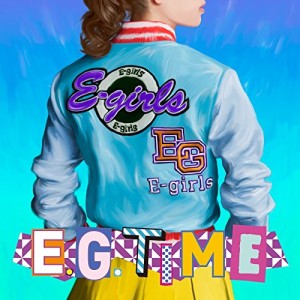
There are no shortage of cans of worms to pop open in relation to E-Girls rise to the top of the idol-ish pop pile in 2015 — one could dwell on how they flipped the idol script by making music aimed at women, or how the K-pop juggernaut actually lifted ideas (and producers) from them to make a summer banger. Yet why waste words when you can just get to the point — E.G. Time was the tightest collection of pop songs released by any Japanese group in 2015, literally on the first day of the year. It corrects the one mistake of last year’s equally fantastic Colorful Pop by cutting out all the ballads, leaving only a collection of high-energy pop songs and cover songs that gave a contemporary sheen to ’90s jams. It features the year’s best Yasutaka Nakata number, “Music Flyer,” wherein group vocals which had in recent years been reduced to a cutesy volume-up tool get retrofitted into a weapon, the song a bleacher-slapping shout. Elsewhere, they offered up the catchiest and sweetest takes on EDM in a year where the rumbling style was at peak popularity, and made Dreams Comes True sound good.
MCpero sits at a weird position right now. Women rap groups and artists gained a ton of momentum as the year came to a close, but the Tokyo artist lacks the pop bend most of these burgeoning projects possess. Yet she also seems out of place within more conventional Japanese hip-hop, as she told me earlier this year she feels she can’t go in as much as her male counterparts. Within this weird area — away from both the domestic trendiness of women rappers and the slight international buzz generated by someone like KOHH — the MC who also fronts a solid indie-rock outfit called Monotoons released two of the year’s absolute finest EPs around.
The Milk EP released at the very end of last year, serves as her intro, and it’s a wonderfully wonky one. Asian rap music in 2015 was defined by easy SEO optimization — meet “the Korean Migos,” and “the Korean OG Maco” — which was certainly on point and something none of the artists involved would deny. Yet the beauty of something like Milk is I have no idea who the cop-out comparison would be — over bubbly beats and samples of birds, MCpero bobs and weaves around the music, at times joyful and other times reflective. Katei Picnic builds on this, with the title track offering up a great take on the undersea rap song, and rounded out with a sweeter number. Whatever direction she went in and whoever jumped on the track alongside her, MCpero stood out on these songs and ultimately just sounded like herself.
Osaka’s Soleil Soleil uses a lot of diverse building blocks in the dance numbers making up his self-titled full length. Over the course of these 14 tracks, he jumps from local singers to samples, featuring voices from Akon to Zedd. Yet whatever serves as the foundation for the music on Soleil Soleil, the producer treats them with warmth which gives his jumpy house creations a sincere emotional core. Made all the brighter by his tropical lean — it seems unfair to call this “tropical house” considering he’s been fiddling around with the sound since 2011 — Soleil Soleil is his finest collection to date, floor-ready numbers with huge hearts, highlighted by his collaboration with rising Kyoto artist Little Bear “Love Is The Greatest Refreshment In Life.”

Tokyo’s LLLL has been exploring unease since the project’s early days, after forming in the wake of the 3/11 Earthquake and Tsunami, and across two albums released in 2015 showed that the ability to create tension has only gotten better. Faithful and Cruel cast catchy pop in the shadows, songs with a J-pop sheen taken to a darker, more anxious place.
This wasn’t a new development, though LLLL got better at it. The real intriguing change, though, was a wide variety of voices appearing over the jittery production, offering more perspectives for the project to explore. Whether gaining strength from the forceful voice of Meghan Riley or disrupting the voice of You’ll Melt More! idol Ano with drum ‘n’ bass percussion (or dropping Tupac into 2015 malaise), these two releases expanded the project’s worldview, adding new nerves to the mix or even offering some glimpses of salvation courtesy of Tokyo’s Metoronori, who delivered a spellbinding vocal turn on “Only To Silence.”
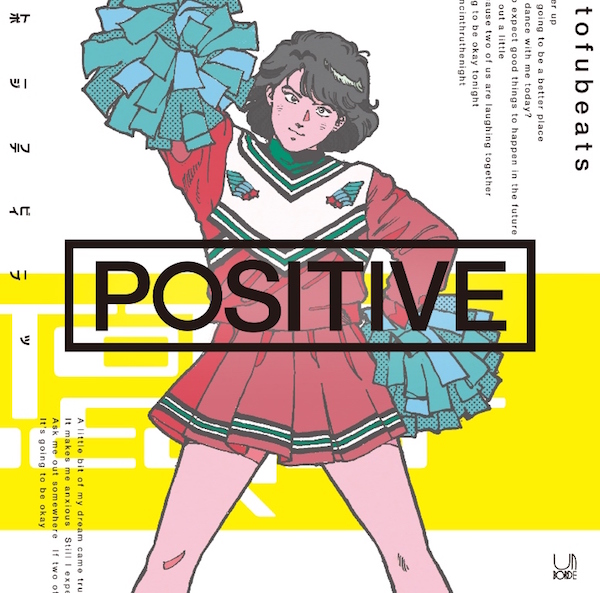
The Internet sure can be great, but do you ever check your history after falling down a YouTube hold? How did 3/4ths of The Fog Of War interrupt a series of K-pop videos, and why is it all bookended by a teen vlogging about their dog? It’s fun, but it sometimes feel like you could have done with a bit more focus. This has been a slipping point for Tofubeats, whose music feels like the Web condensed into song form, and even though he’s made plenty of fantastic songs touching on everything from rap to pure pop to acid house, the Kobe producer hasn’t necessarily made a great album, one that feels like a consistently solid listen from front to back. Like a late night online, plenty of it was fantastic…but some of it could have been structured better.
Positive is just that step forward, the tightest album he’s made yet, but without losing any of the pinballing energy that’s defined his music. Like previous collections, and especially last year’s major label starter First Album, Positive zips between genres, but Tofubeats sounds more workmanlike now, the pop of the title track crisper and even the manic electro-pop of “Stakeholder” sounds more refined. He’s goofy alongside rapper Kreva on “Too Many Girls,” and nails sentimentality about music on the sweet “Kurikaeshi No Music.” But most importantly, he’s learned how to make a major-label album that plays out just right — after a particularly chaotic stretch featuring the digital dancehall furnace of “Throw Your Laptop On The Fire” with Tetsuya Komuro and the drunken lament pop of “Without U” featuring America’s Skylar Spence, Tofubeats dives into the feather-bed sounds of “Suteki Na Maison,” just the right break. Everything that has made Tofubeats an exciting name to watch, from netlabel to Warner Brothers, remains, but Positive saw him piece it into something that worked great in the album format.

Many artists, once they get a sniff of something faintly resembling mainstream success, opt to savor it for as long as they can, with subsequent releases making the most of expanded budgets and space, resulting in long and oftentimes laborious listens. Suiyoubi No Campanella zipped the other way on Zipang — it clocks in at just under 33 minutes, making it an easy release to hit “repeat” on. It’s such an efficient listening experience that after a few spins, the biggest criticism I can think of for some of its songs is that they are too long — like, maybe “Ra” could have been better being less than four minutes.
Whatever complaints could be worked up, though, aren’t enough to derail how much the trio packed in to such a small frame. Traditional Japanese sounds grinded up against contemporary hip-hop and house touches in a way that never sounded like novelty, but rather as a very welcome spice that worked wonders alongside bass blasts. Suiyoubi combined the wild emotion of an outfit like group_inou and the border-smashing lead of the netlabel scene, making for a whirlwind sound that got more looks from the mainstream but which wasn’t really compromised on Zipang…the video for obvious big-time stab “Ra” looked like a Katy Perry diorama, but I’m not sold on a Jersey Club cut about golden rice constitutes a crowd-pleasing shift.
All those mainstream looks centered around lead vocalist — and public face of the group — Komuai, a cartoon tornado of a human who would have to be on a TV show if they weren’t the center of an off-kilter pop group. Yet the music on Zipang was balanced just right, giving her space to get irreverent plenty of times, but also deliver bleary-eyed house pop (“Medusa”) and showcase her voice, which could convey more drama in under two minutes than some Netflix binges (“Twiggy”). Hype around this group has already gotten Japanese media salivating, but forget about “breakthroughs” or “J-pop’s next great hope” chitter chatter, because Zipang is Suiyoubi No Campanella just doing their own wonderfully fucked up thing. More ears just happen to be pointed in their direction.

It’s the summer of 2012, and I’m drunkenly stumbling away from Shibuya’s Home live house, only hours before the sun rises. I’m slouching towards the main street after a show by Moscow Club — well, I think it was anyway. Those ¥500 Heartlands will get to you, especially when you are a 25-year-old nimrod new to the capital, dumb enough to cough up the equivalent of $40 a week in cab fare back to your apartment in Nerima a week. My bank account suffers, but I could care less when I’m in the midst of a golden season in Tokyo…ne, Japanese…indie music, where dozens of artists play shows across the city over the course of four months, and get honest-to-goodness attention from non-Japanese music blogs. Beyond my own podunk affair, of course. Everything is exciting and gripping and the music is incredible. The city’s music community seems on the razor edge of something bigger.
And then I wake up to find that it is 2015, and I’m trying to stop myself from going on that Tweet storm about some idol group that nobody but diehard converts cares about, thankfully realizing “who cares’ before hitting that big blue “send” button. And there are a lot of days like this, not specifically tied to anything specific, but collections of hours spent wondering if music just doesn’t mean that much to me anymore, if I should just go on the subway to listen to another podcast hosted by a guy trying to be Howard Stern 2.0 and imagine what my application to some PR company would look like.
Then something like Outfit Of The Day comes out, by a band I thought had just up and quit like Moscow Club, and every feeling comes rushing back. I hear the four-piece sewing Kraftwerk together with Frankie Knuckles for their own European jaunt, and my heart races at the sonic diversity and playfulness. I hear the opening jangle of “Band Of Outsiders” and recall every Japanese indie-pop song that made me want to spend my waking hours feeling melancholy and occupying record stores. I hear the faint echoes of groups gone silent or into the shadows — Hotel Mexico, Ellen Never Sleeps, etc. — in “Margaret” and “Ivy League” and think back on those glory days. I hear the twinkling longing of “Celine” and recall the swirl of emotions countless bands and artists conjured up in me just a few years ago, and why I spend time staring intently at a WordPress Dashboard at all. I listen to Outfit Of The Day and am reminded of why I love all of this so much.
How many sounds surprised you over the last 12 months? I don’t mean, like, artists who you thought weren’t that compelling suddenly releasing a great song, or even a song catching you off guard. I mean sound, individual noises, sounding alien and tethered to no trends. Plenty of artists made great music over the course of 2015 — I swear this isn’t a grump session — but how many explored just how far they could push noises? At this point, I’m used to what to expect, whether that be seeing the waveform of a song on SoundCloud, or seeing music bunched into playlists like “breezy tunes for picnic — reggae.”
Bless Taquwami, then, for spending 2015 seeing how much he could turn out individual sounds. Dude has always been ahead of everyone else, keeping a low profile and pushing his music into alternate dimensions. His two EPs from this year explored two different ends of the spectrum — Aj Mo Ka / Ka Ao Um played out like a just-under-ten-minute journey, Taquwami blanketing his spacy synth sounds with piano and acoustic guitar. Silence played just as big a role in these two songs, helping ramp up the drama created by frazzled electronic sparkles and what sounded like victory-on-the-front fare from a dusty radio. It was a deeply melancholy listen at times, but always sonically intriguing.
That bloomed on this fall’s Moyas EP, wherein he explored just how far he could bend familiar sounds into something new. Over four songs, Taquwami threaded together disparate noises, all of which sounded like they were seconds away from t-boning one another and making a mess, but always placed just right to create compelling music. “The Gathering” imagined a color-inverted Enchanted Tiki Room with a hip-hop beat made out of clock ticks and human gasps. The title track swirled vocals into alien dialects, and rounded them out with pan flutes and hyperspace wirrs, while “Otogi Bass” turned a bunch of sounds that have seemingly been exhausted by “trap” EDM — that fucking air siren — and warped it into something more thrilling and life affirming. It was a noisy year, but nobody probed sound like Taquwami and came out on the other side with music so daring and endearing.
Year-end lists generate a lot of phenomenal writing and reflection for the same reason they create a lot of garbage paragraphs — because the very nature of the beast requires blurbs to be all encompassing, and of connecting songs and albums to matters that, in most cases, are far bigger than they are. Trust me, I’ve been there. But what happens when the album you love the most is also one shirking away from the outside world, moving away from the chaos of Earth 2015 in favor of lonely forests and imagined ocean canyons? What happens when you choose quiet in a year that was unavoidably noisy?
Ayuko Kurasaki’s music under the name Noah has always felt far away, her breezy voice and barely-there electronics sounding alien from the sonic world around her. Whether she was creating skeletal beats or teaming up with a Texas “vapor rapper” to create hip-hop out of fading neon, Noah’s music sought quieter landscapes to reside in. Influenced by a childhood spent surrounded by Hokkaido’s lush nature and a classical music background — “I used to draw or play piano in our backyard, under starlit skies with my pet dog” — she has created spacious, refined songs, the perfect backdrop for her voice to breeze over.
Sivutie, her proper full-length debut, is a reflective collection. Noah makes sparse tracks drawing from ambient music and her childhood piano lessons, just the right backdrop for her voice to swoop and sway. Yet she isn’t an artist interested in showing off her vocal abilities — though her singing is as captivating as any Japanese artist going today — but rather she sounds like a wisp, oftentimes covered in a powder of distortion and sometimes pitch-shifted into something ghostly. Sivutie isn’t afraid of sudden changes, whether that be linguistic or in tone — “(Interlude – Doll)” is simply a piano number, and it is followed up by one of her loudest songs, the droning “Tadzio.”
Yet whatever direction she goes in, Sivutie is consistently gorgeous, an artist taking her time to create an enveloping sonic world where vocals don’t have to be talent-show-huge to be stunning. Sadness bleeds through on the slow-motion whale song “Unspoken,” while she made one of the year’s most unsettling songs in the late-night drizzle of “Motion.” Yet she also finds joy on “Flaw,” and peace amidst the toy-box chimes and nature samples of “Times.”
What sticks with me about Sivutie is the space the album allows for regardless of the emotion called up, for reflection and for wrestling with the feelings her blur of sound brings out. Her singing never argues for something or even tries to convey direct thoughts of something…it is simply another instrument in her sound.
Few songs or albums felt this way in 2015, a year where shouting louder than everyone else tended to work wonders in music and everything tended to be an argument for something else…even if it wasn’t. That distracts a bit from the sheer craftsmanship at the center of Sivutie, as Noah made the most beautiful album out of Japan this year, one which would have been just as absorbing in any year. But it felt extra sweet in this one.
Ultimately, it wasn’t purely a retreat from the clanging and constant bad news of 2015, but an album of meditation and healing. “Some of my songs are about dreams, but it is something more realistic,” Noah said earlier this year. “They are not for escape, but hopefully they’re something to make your life better.” Sivutie was a masterclass in that.
Make Believe Melodies’ Best Japanese Albums 2015: #20 – #11
Tokyo’s Trekkie Trax runs on pure energy, the netlabel being a rare case where seeing anyone in their orbit live trumps digging into the .ZIP files they upload online. And they have released a lot of great dance music over the last couple of years, with 2015 being a benchmark year for them. Yet it all gets ratcheted up live, especially when the Trekkie Trax crews gets together to support one another (a live highlight for me was at this Jersey Club show, during Trekkie Trax head Seimei’s set, when the Trekkie Trax crew started going nuts and jumping on the front rail of the venue).
Lolica Tonica’s Make Me Feel EP captures the netlabel’s energy on file better than anything they released this year, a maximalist collection of songs loaded with snapping vocal samples and dizzying synths, rounded out by solid remixes from label heavyweights Carpainter and Zekk. The title track wins the day, though, and stands as one of the most joyous electronic songs to come out of Japan over the last 12 months. It’s all jitters and release, taking sounds that have seemingly been trained by SoundCloud producers and pushing them even further until breathing new life into them. It’s restless, and would make for a hell of a mission statement.
Speaking of Internet-centric dance labels who had great years, Fukuoka’s Yesterday Once More quietly put together one of the most compelling Bandcamp release pages you’d find anywhere in 2015. From the reflective sounds of Katafuta’s Ginger to the bat-shit-quick bounce of DJ NHK Guy, they put together a varied but always strong stable of music. Label head Shigge, though, lays claim to the two best entry points into the imprint’s vibe this year, starting with Sun Lime Juice. What started off as a tropical breezer of a set — especially come the delirious “Bed Room Warmer” — turns reflective come the cloudier conclusion of “Stay With You.” This October’s Tiny Block went in a more R&B and hip-hop-influenced sonic direction, but held on to the same emotional mix of outright bangers and sparser creations.
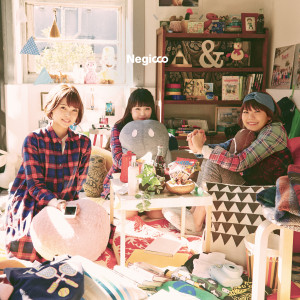
Negicco have always been a bit behind of trends. They formed in 2003, right after Morning Musume fever was cooling off and a half-decade of relative indifference to idol music, depending on how you classify Perfume. The trio came to life in order to shill locally grown onions a decade before efforts by rural Japanese government were trendy. They’ve been repping Niigata for more than ten years now, yet they never got a speciality item at local fast-food joints.
Yet being out of step paid off big time on Rice & Snow, at least as a cohesive listening experience. Whereas the bulk of idol music retreated into fan-base-pleasing sounds or hoped that having at least one former member of BiS would be enough, Negicco put out an album that refused to sit still. Backed by a wide array of producers but anchored by long-time songwriter Connie, the trio delivered throwback pop to talkbox-soaked funk to the best song Yasutaka Nakata forgot to make in his career in the bouncy “Triple! Wonderland.” I’m not sure much idol music is apt for night-drive videos, but then again not many idols released “Blue, Green, Red And Gone,” an off-kilter nocturnal tune doubling as a road map of Tokyo. It was the best idol-pop album of the year, but Rice & Snow matches up with most pop albums, and was the year’s most surprising stunner.
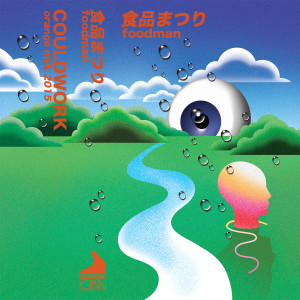
Foodman has never felt like an album artist, or a singles artist for that matter. His oddball approach towards footwork — shared via a steady stream of EPs, SoundCloud experiments and compilation nuggets — feels more like a constantly unfolding collage, each new page featuring magazine cut outs of whatever items tickle his sonic fancy as of late. So all praise to New York’s Orange Milk Records, champions of many great Japanese artists, for finding just the right format to highlight dude’s herky-jerky sound. Couldwork is half compilation, half new sounds, but all together a great intro to Foodman’s disjointed world. It shows off his way of taking seemingly weird source material and composing minimalist jams out of them — such as a mosquito and a clap on “Mosquito & Clap” — to making clattering noises gel together just right (“Kawazakana”). It even features an intense guest appearance from a pre-Grimes Aristophanes, on the album’s most confrontational moment. Couldwork is a hell of an entryway into Foodman’s world, but it’s also one of the best all-around collections he’s made in his wonky career.
Electronic music out of Osaka in recent years has tended to either be a sort of hyper-real pop (see: Seiho, Avec Avec) or more deep-space inclined (And Vice Versa, Ryuei Kotoge). Whatever form, the scene out there has been mostly spacious, with the closest thing to constriction coming from Kyoto’s Eadonmm, who is more unnerving than claustrophobic. Producer Yullippe didn’t stand out just because her music sounded like it was made purely from dark matter, but that she created such compelling songs from such oxygen-deplete noises. Taking cues from industrial and techno, her Lys sucked in all light and shot out shadow-y dance tunes that had enough beat to work on a dance floor while also housing an uneasy side. Few albums sounded as heavy as Lys in 2015.

Bunkering in for a STEM degree might lead to an alright job, but you also cut off a whole bunch of important knowledge. For all the talk about math rock in regards to Kyoto’s Tricot — guilty as charged — the trio have always been as about the humanities as they have graphing out guitar notes. And found them balancing factory-precise music and emotional release better than before, with polished numbers such as “E” featuring vocals on the verge of cracking. As tight as Tricot sounded across this album, they found a way to inject raw feeling into it too, whether that be the near-whispered words of “Kobe Number” or the tumbling chug of “Kieru, Vanish.” If you were looking for an argument in favor of a balanced education, And was a trump card.
OK, I swear, this is the last time I bring it up…but beyond just being an empty marketing slogan, new City Pop doesn’t even sound like anything from the ’80s. Like, half of it is pop with really sharp bass lines, or maybe it sounds like Fishmans. Plenty of it is good, but this stuff didn’t even get close to being model kit versions of the Bubble Era (plenty of those too, though), but just sounded…like the ’90s, maybe?
Schau-Essen 2 would be worthy of highlight simply for actually capturing the glitz and ridiculousness of ’80s J-pop, but it jumps up this list for also capturing the emotional messiness buried in all those synths and sax blurts. It all hangs out on Coffee And TV’s “Drive With Me,” a boogie tune wherein the producer steps up to the mic and delivers some electro-soaked singing. “Vocal is shit,” he wrote on SoundCloud, but is far from polished delivery adds an emotional realness perfect voices rarely can capture, and adds real intrigue to otherwise decadent music (though, also, that keyboard solo). This balance between big neon sounds and sweetness makes the comp a strong listen, from Boogie Idol’s shimmering number to C-Side Sea Site’s breezy longing on “Summer Reflection.” And it’s stupid fun too — I’m willing to bet no album on any other “best of 2015” list features a four-minute-plus fake radio show interview. In a year where City Pop nostalgia was seemingly in, here was one of the few albums capturing what it was about from all angles.

Ghost Is Dead is like an email out of the blue from someone you haven’t seen since high school. It’s a cup of coffee or two with a friend you lost touch with, a gentle reminder that for all life brings that the intrinsic character of that person remains the same. Spangle Call Lilli Line didn’t juke in any new directions, as they once did from album to album, but was rather an 11-song reminder of the vibe they do so well. That this album probably shouldn’t exist — it was the band’s first in six years, after each member’s life basically got in the way of the group — makes it sweeter, and the bare-bones circumstances in which it came into existence makes for one of the trio’s most immediate albums. All the adjectives get checked off — reflective, uneasy, dusky, nocturnal — with moments of skyward release thrown in for good measure (“Constellation”). Ghost Is Dead is nothing daring, and that made it all the more comfortable to soak in.
Saitama’s Boys Age have slowed down ever so slightly, at least compared to their gushing-hose output of the last three years, when they had a new song, like, everyday. The duo still work at a pace faster than most bands — they already have an album prepped for this January, these guys don’t take vacations — but they’ve been a bit more relaxed in rushing out material, resulting in albums that are a bit more cohesive all around. Calm Time is the best of the lot, inspired by a murder-centric video game, and a surprisingly mellow collection. Despite an easy-going speed, Calm Time features psychedelic strokes and a general sonic wetness, made all the more intriguing by the marble-mouthed vocals. All of Boys Age weirdness was on display, but refined into their most digestible album yet.
Removed of all political context, the Atomic Bomb Compilation has been one of the finest collections of Japanese juke music over the last three years (and starting with this installment, non-Japanese artists as well). This third set once again showcases the many takes on the style that have cropped up across the island, from the skippy piano-driven work of Gnyonpix to the manic noise of lililL. Sound alone, this is one of the best single collections of Japanese juke in 2015.
Yet Atomic Bomb Compilation Vol. 3 comes loaded with context, some of it intentional (this one came on the 70th anniversary of the end of World War II, which ended thanks to the atomic bombings of Hiroshima and Nagasaki, the former where this comp originates form) and some coincidental (the double whammy of nuclear reactors being reactivated post Fukushima, and the country’s current shift away from pacifism). This collection, especially its more disjointed and chaotic moments, captured the uncertainty and ill feeling shrouding the country as 2015 comes to an end, making for a far more punchy political statement than any chants could.
Make Believe Melodies’ Best Japanese Albums 2015: #30 – #21
I’m not sure anyone can be truly nostalgic for a time that was about three years ago, but 2015 was the year I reminisced frequently about albums. Specifically, the commitment it took to go out and buy CDs back in the far-off time of 2010 (a point when physical releases remained the only way to listen to music in Japan). I’d ride a train for an hour to get to Osaka, wherein I’d spend a few hours stopping by music stores to buy albums that cost, oh, about $25 a pop. It sounds like a Simpson’s joke, but I thought about how this used to be the norm in my life.
Which isn’t to say I miss it — 2015 was the year streaming arrived in Japan in full force, coupled with a looser (uhhh, domestic) embrace of YouTube. It has never been easier in Japan to hear a wide variety of music much cheaper (if not free!). Yet this shift also moves against the album — singles and playlists excel at these formats.
So I’m not sure if making a “best albums” list in 2015 is simply just a nostalgia trip for me when the world turns a different direction. But after wracking my brain to make this list, I think this still works well, as Japan produced plenty of very good long (and short!) players full of great stand-alone songs and doubling as cohesive listens.
(Honorable mentions also worth checking out for the curious: Ano(t)raks Plus One compilation and Caro Kissa’s One Summer Day, House Of Tapes Magnolia EP, Takeaki Oda’s Loop EP, Cuushe’s Night Lines and May.E’s See You Soon “Session For Us” tape and Tomggg’s Butter Sugar Cream.)

Yoshino Yoshikawa and Lovely Summer Chan both made plenty of strong material on their own over the past year, but this joint album released near the very start of 2015 highlights just how strong they function together. Yoshikawa’s chiming playroom pop gets an extra dose of sweetness with her voice on top, adding extra pep to the bouncy “Hajimemashite” and extra longing to Yoshikawa’s “Yumetatsu Glider.” The most important result of their partnership, however, is balance, the songs on Yoshi Yoshi, Summer! showing elegance.

It’s fitting that train stations and lines play a central role in the songs Tokyo’s Beef Fantasy creates. Spend enough time in the capital and you’ll realize how central public transit plays in the lives of everyone, whether as geographic marker or as the space where you spend a surprising amount of time just…being. Japanese Recorder centers around trains, whether it be the bouncy funk of “O.K.U.” or the slow-motion disco of “Dreaming Keihin Tohoku Line,” the latter loaded with JR-born samples. It’s an appropriate background for a project taking cues from Shibuya-kei without sounding like a museum piece, loading songs up with samples and blurring genre lines between dance, pop and hip-hop.
I expected everyone on the bill of the Harusaki show at Akihabara’s Mogra to deliver, and they did. I figured after a night of fizzy electro-pop, In The Blue Shirt’s night-closing set would be a nice come down, but the Osaka trackmaker ended up stealing the evening, with an hour-long show moving between energetic bouncers to more reflective songs, all while In The Blue Shirt himself grinned intensely, like he was surprised he was going this bananas.
Toward Morning is the bite-size peanut butter cup of this experience, a trio of songs that start with the reflective title track before getting sweetly manic on “Fool” and just losing it on the sample-rush of “Buttercup.” It’s silly and emotional, and always apt for the dance floor.
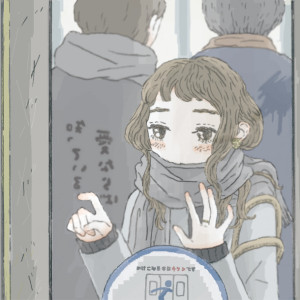
What made the idol boom of 2009 to about 2014 so exciting was how these groups allowed up-and-coming producers a way to sneak their music to a wider audience. In 2015 that shifted, as idol outfits opt for more legacy names while more adventurous sounds have started flowing out of the burgeoning “women rap” scene.
Fukuoka’s Izumi Makura has been ahead of the curve on both these fronts, having been rapping over music from a wide array of artists for a few years now. Ai Naraba Shiteiru featured some of her most left-field songs yet, Makura delivering her confessional whisper raps over wonky tracks from abstract juke maker Foodman and astral-leaning beatmaker Olive Oil. Rounding out the album were more straightforward sounds, which put the emphasis squarely on her voice, which remains one of the most intriguing in the country today.
Familiarity can be just as important as the thrill of the new. I-fls’ simple Garageband-born music remains the same as it did in 2013 — emotional elevator melodies reveling in the ennui of suburban life. I could spin a wheel at this point to select the collection I’d drop on this list, but Artificial Outsider stood out among them, jumping between longing and playfulness. Like the familiar restaurants and street lights of your hometown, I-fls’ songs offer comfort even at their most melancholy.

Funk seeped into many forms of Japanese music in 2015, whether sneaking into mainstream J-pop or dripping out of the record-store-ordained “new City Pop” trend. Tokyo’s Poor Vacation stayed under the radar while making some of the best indie-pop featuring tight bass lines and sticky-as-glue synthesizers. Hayato Narahara’s solo project conjured up a longing that often got abandoned in similar sounding projects this year on debut mini-album Metropolis, all without losing the floor-ready sound.
The cleanliness of Kyoto producer Madegg’s previous albums and EPs didn’t exactly vanish on New, but the young trackmaker was far more eager to shine light on the cracks and wrinkles on his latest full-length. Voices blurred into disorienting swirls while low-end rumbles added a previously unseen menace to songs such as “Dragon,” and even the more uncomplicated techno creations like “National Water” came shrouded in mist. New wasn’t a fresh start for Madegg, but it showed how uneasy moments could be just as beautiful as the clean.

First off, if you can find a better romanization for (((さらうんど))) outside of the band’s site URL, holler at me.
Second, See You, Blue is what I imagine something called “new City Pop” would actually sound like — Sssurrounddd map the genre’s genome and then restructure it into something totally different, something that couldn’t be pulled off in the Bubble Era. Sax goes superhuman on the dizzying “Boys & Girls,” while “Siren Syrup” bounces forward on chopped-up vocals and house pianos. It’s reverent to City Pop, but not afraid to push at the edges of what defines the style and stretch it out.
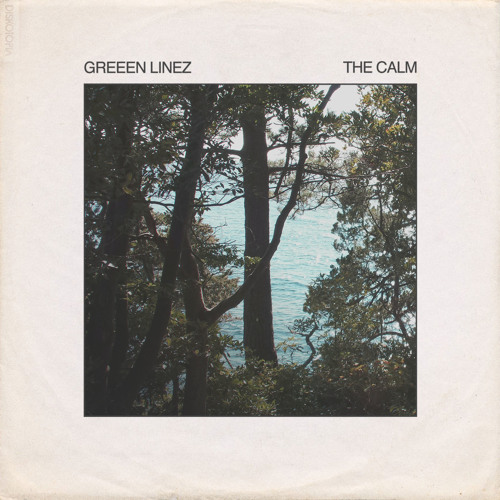
The music duo Greeen Linez made just a few years ago recalled the lobbies of fancy hotels and Lifestyles Of The Rich And Famous bumpers, glitzy tunes taking cues from the opulent sounds of City Pop. Hints of the Bubble Era popped up across this year’s The Calm, but the pair expanded even further on The Calm, creating sweltering dance songs that retained a resort-ready vibe but open to new sounds (and eras, at that, as a healthy amount of drum ‘n’ bass pops up across this album, an expansion from last year’s Izu King Street). It’s the most contemplative Greeen Linez work yet.

The part of me that likes dumb, sweeping statements in year-end lists wants to call Par the end point for SoundCloud producers, except Parkgolf isn’t retiring or anything. The Sapporo producer takes every sound that has become a stereotype about the music-sharing site — pitch-shifted vocals potentially lifted from R&B, an overload of synths, seeming incorporation of trendy dance styles — and fucks it up into something dizzying and glorious. The closest thing dude has to a Jersey Club banger is called “Woo Woo” and it sounds more like the Jersey Shore soundtrack run through a blackhole. His songs ooze a messy sensuality and Parkgolf splatters them with wild keyboard playing and splashes of bass, making for a very controlled whirlwind. Par stands as one of 2015’s wildest rides, and a reminder that even the things you are most used to can sound brand new in the right hands.


